It seems like such a long time between a student entering pre-kindergarten and aging out of high school. The truth is it’s just a fraction of their lifetimes. In the little time we have, our most important responsibility is to equip our students with an effective way to communicate with others. It is essential to make the connection between AAC and abuse so we can intentionally lower the rate of abuse for nonverbal students.
Meet Tricia…
I was in a classroom just last week and a 20 year old young woman was exhibiting some severe behaviors. She, let’s call her Tricia, was a student with Down Syndrome and a severe Speech Impairment. Most of what Tricia said came out as grunts and points.
That day Tricia went through an entire 30 seconds of emphatically grunting and pointing and making facial expressions to the para-educator in the classroom. The teacher was standing next to me and I asked him what Tricia had said.
He replied “Damned if I know.”
Clearly the aide didn’t know either. She looked confused at Tricia and asked her “What do you want?” That was the straw… Tricia punched her arm, pushed her and moved to a nearby table where she proceeded to throw all the papers and materials onto the floor.
The behavior escalated from there.
Later, when calm had returned, I asked the teacher how Tricia expressed her wants and needs. He looked at me and replied, “I guess she doesn’t.”
*Sigh*
What is the Rate of Abuse?
I see student like Tricia all the time across many learning environments… A student who has thoughts and wants and needs, but cannot get them out (read more about presumed competence).
I believe most students with Autism fall under this category since Autism is so closely linked to language and social skill deficits. Since our classrooms are filled with students who have severe and profound disabilities, I was shocked when I first learned about the rate of abuse in my student population.
First off, people with disabilities are not identified in crime statistics, so that does make it harder to calculate the exact rate of abuse. It also makes it harder to connect AAC and abuse directly. With that said, research has determined that there is a consistent and evidence backed link between abuse and disabilities (Sobsey, 1992).
Whereas most of the non-disabled experience abuse at a rate of about one in ten (10%), those identified with a disability who require special education are victims of physical abuse, sexual abuse, or neglect at a rate of about 33% or one in three (Sullivan & Knutson, 2000).
Our population is unique, however, in that most of our students have an identified intellectual disability or complex needs due to multiple disabilities. In those situations, their abuse rate increases significantly to estimates up to 70% (National Research Council, 2001).
If you are a teacher and working with students who have severe and profound disabilities it is up to you to equip your students with a way to lower this staggering statistic.
Why Does Abuse Happen?
When a person has no way to communicate, there are inherently prone to a higher rate of abuse because they become an easy target. That mixed with a diminished understanding of abuse, what exactly it is, or what to do about it all come together and harm our student’s chances of living an abuse free life.
It is fact that our students will live most of their life in a supported setting like a group home, assisted living facility, rehabilitation service center, or hospice. In all those places they are dependent on others to provide care and thus become more likely to be abused.
Think back to Tricia. As a teacher and aid in the room, the adults around her are more tolerant of her outbursts and her behavior. She is still a kid in our eyes.
Now think about how this same situation might play out when Tricia is 45 and at the mall or a doctor’s office. Suddenly it’s much less tolerable, especially to those who don’t know about disabilities, don’t work with nonverbal or minimally verbal people, and who just don’t like to be hit. That’s when we start to see grave consequences as we connect a lack of AAC and abuse.
I can see how our students may end up in unfortunate situations. And the gender of our students impacts the type of abuse they encounter. Males are far more likely to be physically abused and females more likely to be sexually abused.
We also see incidents of police and armed responses to behavior outbursts where the responding individual does not know about disabilities and reacts to a 45 year old Tricia at the mall hitting a cashier and screaming with violence.
We don’t want this for our students.
All About the Response Modes!
So, now that the relationship between AAC and abuse has nauseated/depressed/prompted you into action, what can you actually do? Response mode, response mode, response mode. We have to teach our students to communicate using AAC (Augmentative and Alternative Communication) with others .
I know. Now I will wave my magic wand and *poof* all your students will communicate! Did it work? Must be the wand.
If it were only that easy. It’s not. Please, please, please pop over to read more about PECS, communication boards and AAC. You can also read about 5 tips to teaching nonverbal students. But do you feel like you already know that you need to teach communication and even have the tools in your classroom… but are still lost?
I have a challenge for you.
Get Talking Challenge!
For the rest of this and next month I challenge you to work on just one word in your student’s communication arsenal- One Word.
Go…
Yup, that was the word. Go. Think of all the ways you can use it. Alone and in combination like:
- Go.
- I go.
- Go out.
- Go pee.
- Go bus.
- Go eat.
- Go away.
- I go class.
- I go restroom.
- I am going.
- I am going _____.
I know you can see how diverse this one word can be. So let’s all meet the challenge of starting there.
Implementation Strategies
Well… it may not be enough for me to challenge you to embrace “GO”, you man need more tools in the toolbox to make this first challenge a success. So here are a few tips:
- MODEL! Please model. You should be the one using whatever AAC/comm board/VOD device your students have accessible to show them where to find go and how to use it. In fact, for the first week, YOU will be the only one to use go with your student’s mode of communication. You. We all fall victim to this one, we show our students where to find the word and, magic wand time again, just expect they will remember how to use it from there on out. *Poof* Doesn’t work that way. We will have to show them what it looks like over and over again until they learn it. So, first week out YOU should be using the heck outta the word ‘GO’ WITH the device/board/AAC.
- WAIT! If you think your student is going to watch you use their device and then be able to quickly mimic, then I’ve got news for you. They won’t. Add some wait time for them to process and respond.
- JUST ‘GO’! It is okay if the only word used to start is the single target word “GO” and not a two or three-word string. We are just targeting one word, but we will build to more later. Be sure you are using the heck out of go and referencing it with their device. When they start to match your output, then start stringing 2 or 3 target words
- DOOR! Put a ‘GO’ Icon near the door… and then you will remember to refer to it each and every time you or any student leaves the room. You must point to the word, if possible say it too, and, if possible, string 2 together. Believe me this one is a winner… and a great way to introduce using the word as well as using AAC.
- PARENTS! Every parents wants to be able to communicate with their child. Send home a ‘GO’ icon so parents can refer to it too and reinforce all your good work in the classroom. You can always provide them this link in an email or class newsletter to print the visual aide below for their homes. Every bit of buy-in helps!
Download this AAC Starter to Put Near YOUR Door!
<<CLICK HERE TO DOWNLOAD>>
AAC and Abuse
The truth is the statistics surrounding AAC and abuse are staggering and people who use AAC are more likely to be abused than a verbal person with a high incidence disability like ADHD. In order to stem the rate and severity of the abuse, we, as teachers, have to empower our students by teaching them a mode of communication. It is their right and our duty… so embrace ‘GO’ and get ‘GO’ing!
And please let me know how it is going by posting in the comments once you accept this challenge and see progress!
References
- Knutson, J. & Sullivan, P. (1993). Communicative disorders as a risk factor in abuse. Topics in Language Disorders, 13 (4), 1-14.
- National Research Council (2001). Crime victims with developmental disabilities: Report of a workshop. Committee on Law & Justice. Joan Petersilia, Joseph Foote, and Nancy A. Crowell, editors. Commission on Behavioral and Social Sciences and Education. Washington, D.C: National Academy Press.
- Sobsey, D. (1992). Violence and abuse in the lives of people with disabilities: The end of silent acceptance? Paul H. Brookes Publishing Co: Baltimore, MD.
- Paige, Shannon (2014). Core Vocabulary Workshop. Implementation Strategies.
- Sullivan, P. & Knutson, J. (2000). Maltreatment and disabilities: A population-based epidemiological study. Child Abuse & Neglect, 24 (10), 1257-1273.
Learn More
If you are still wanting to read more about communication in students with significant disabilities, check out my YouTube playlist, starting with this video. It will walk you through social scripting.
You May Also Like
If you have AAC and abuse on the mind, that’s good. You may need some tools to help support building communication in students with disabilities, then check out these digital products:
Article Citation: [cite]

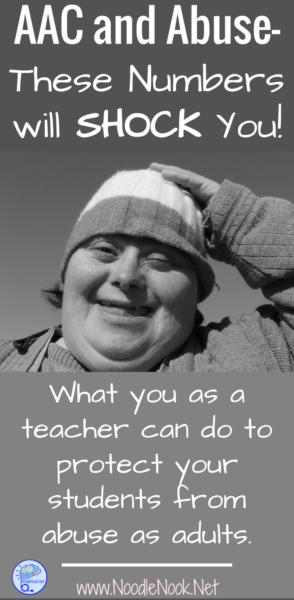

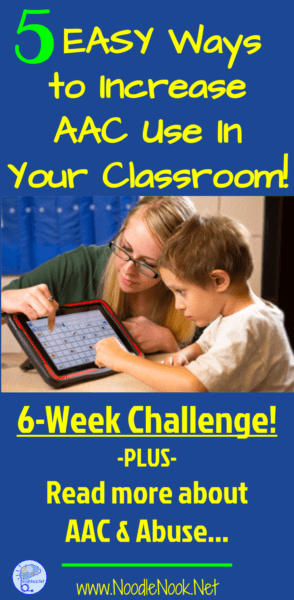
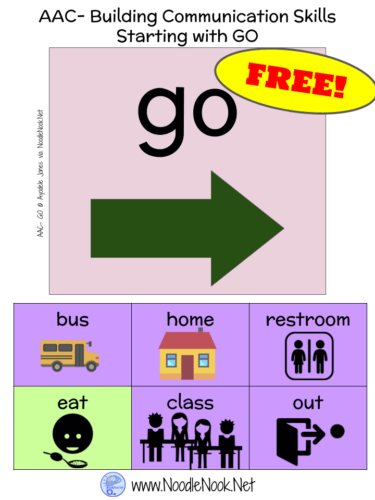
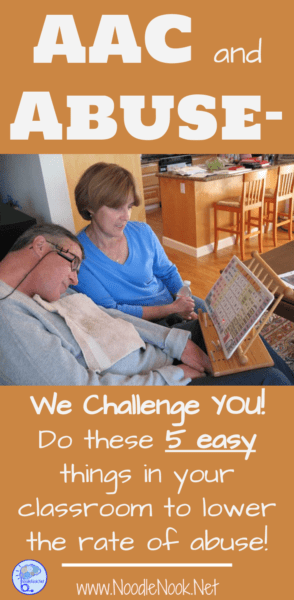
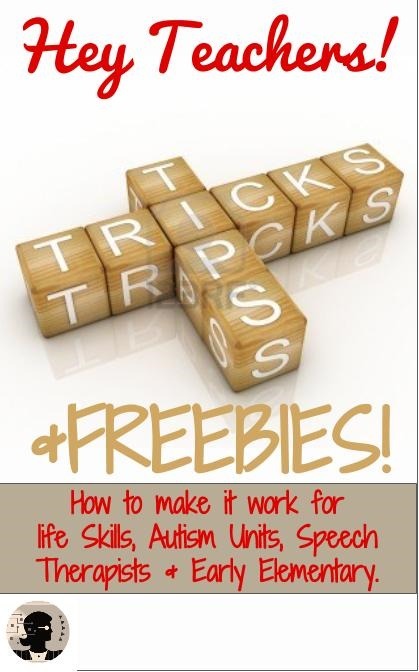

Next word to teach “STOP.” I actually teach my students (once we have built up real rapport) by annoying them and teaching them to tell me STOP! Important: then reinforce them like crazy for it to build back the trust! I even remind them, “If someone touches you and you don’t like it – tell them STOP.”
It amazes me that you don’t mention the very obvious connections between teaching compliance and use of physical prompting in grooming people with complex communication needs to be abused. You think teaching core words will impact abuse rates and ability to report? Not if teaching them we use those worlds involves compliance training and physically prompt individuals. If you care about your students and those of the people who read your blog you need to think seriously about what happens when we reward compliance and punish non-compliance. When we teach people with disabilities that they must do as they are told, even if it makes them uncomfortable or unhappy or feel bad then we teach them to be abused. When we manipulate the bodies of disabled people and force them to do what we wish (via physical prompts) we teach them we they must allow others to do whatever they want with their bodies. If you are serious about wanting to address abuse in this population you need to do some serious thinking about how you approach your students and how you teach others to approach people with disabilities. You do more damage than you could possibly know.
Hey Kaye!
I love what you have to say. When I train on AAC systems, I am always surprised at how many boards teachers make without a way to refuse. That is one of the most essential pieces – everyone should have the right to say NO. But, with that said, a lot of what we teach to all students is about compliance, not just in special education. Indeed, most community laws and social norms require communal compliance. Even with this in mind, all communication systems should include a way to refuse. Anyone who’s ever worked with a toddler knows their absolute favorite word is NO (or with teens, naw, bruh).
Thanks for adding to the conversation!
Comments are closed.